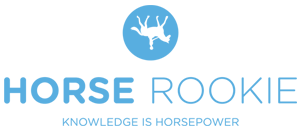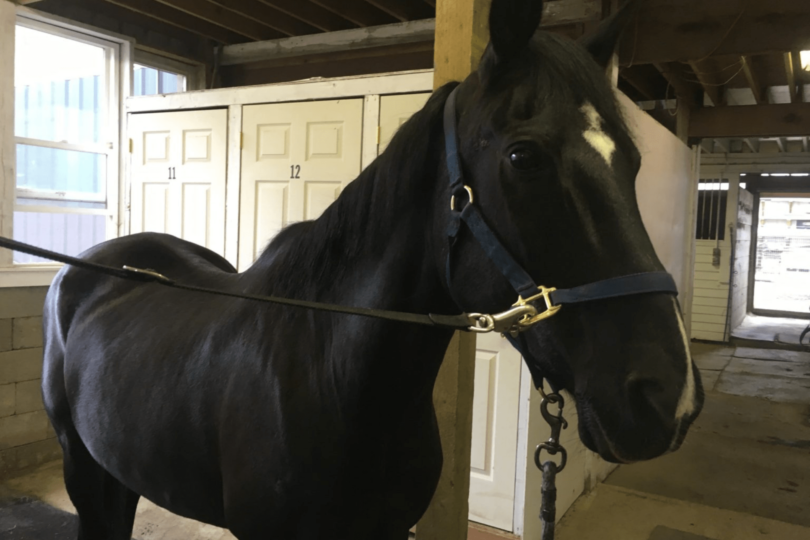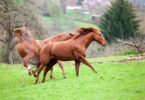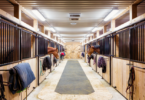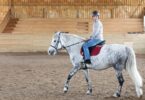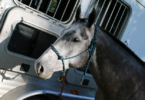Connecting With Chip
In session one, I introduced Chip. He is a hard-working Warmblood with tons of trail experience and a heart of gold. The journey we take with our horses is where we learn the most, so I invite you into mine.
The Focus
Chip has years of under-saddle experience. In his earlier years, he was trained in collection, so he knows the collected frame, but lacks muscle tone at the moment and still has rough finishing.
He has done hundreds of miles of trails in the mountains and even the ocean, but has limited experience in the arena.
He favors trotting over cantering and, to my dismay, favors following any path around the arena–except the rail. Based on last week’s session, here are the goals I have outlined for him for the next few months:
- “Hoa” on the Lunge Line
- Lateral Strength
- Leg Aids in the English Saddle
- Trot to Canter Transition
Between the last recorded session and this one, I have made it to the barn to lunge him and to practice some trotting circles to work on his lateral strength. I figured that to make training sessions more effective, I needed to have days just to focus on building his strength (Goal 2).
In this session, we focused strictly on leg aids in the English saddle and the trot-to-canter transition (Goals 3 and 4).
The Prep
I love seeing this boy’s face at the barn. When I call him from his stall door, he acts coy at first, like he wants me to come get him. But then I call for him again, and he walks right towards me.
Chip is now acting like an old pro with the English saddle. He doesn’t give it a second thought when I’m sliding the saddle on his back.
Lunge-Line
On the lunge line, however, he was all over the place. We walked into the indoor arena and the rain was pounding on the roof. Another horse in the arena was flipping out over the noise, so Chip started snorting and prancing. This is very out of character for Chip, and I suppose it was a combination of the noise on the roof, the other horse freaking out, and the newness of lunging under the English saddle.
I tried to lunge him a little each direction, but he wouldn’t go into a full circle, kept trying to rip the line from my hand or run to the center. Figuring that there were too many stimuli putting pressure on him, I calmly pulled him back to the middle where I was, took off his saddle, walked him around the arena while the other horse calmed down and left the arena.
We started over.
Of course, I ideally want a horse that will be calm in all three of those circumstances, but today Chip was overwhelmed.
For him to continue to trust me, I felt I needed to help him out a bit and “protect” him, so to speak.
I still expected him to lunge well each direction (and he did, very willingly), but I knew that this was Chip’s overwhelmed point and not a tantrum. I didn’t want to keep pushing him and create a bigger deal out of his panic.
Under Saddle
After tacking him back up again with the English saddle, I was curious how he would be after the lunging debacle. Yet I still expected him to do well. This is a mindset I try to go into all my sessions with. If I’m doubtful of how the horse is going to behave or feel, or even if I’ll be a good enough rider, I still go in with the mindset that it will be a good, productive session.
If I let doubts and fears cripple me, my horse will pick up on my uncertainty and perform poorly.
Last week, I focused on just getting him through a couple of decent canter transitions. This week, I wanted to build on that. I took the same approach of the wide circle for stepping into the canter on his good side (clockwise). He did well, although he was a bit tense stepping into the canter. Last time I skipped his bad direction because I was so excited he had given such an effort to canter.
In this session, I wanted to try the canter in his more difficult direction but with a different approach than the collected trot circle.

Photo Credit: Lindsey Rains
I moved Chip into a forward yet relaxed jog. Then, rounding into the corner that led to the long side of the rail, I sat deep into my seat, slid my inside leg to his girth and my outside leg behind the girth, applied pressure, and he stepped right into the canter! I would even go so far as to say that he was somewhat relaxed.
We only cantered about halfway around the arena before bringing him back down to a walk. The corner had not only helped with the bend, but also proved to be a breezy, instantaneous release because he was cantering straight instead of having to hold a bend in his already difficult direction. We repeated this and finished our session.
There is a fine line between pushing your horse past their comfort zone and being forceful.
Most of us have been wrongfully forceful at one point or another, but it is important to learn to read your horse well. It is equally important to know your own agenda and frustration point. If you apply patience and work towards having a happy, relaxed horse, the training will stick. If you just see that your horse is not where you want him to be and blame him for it, you will likely keep going around in circles in his training. That, or you will have a horse that performs, but carries a lot of tension in his body and tends towards exploding on their riders.
Roadblocks and Issues
Chip’s spook while lunging made me wonder if he would even be able to pay attention under saddle. The combination of the rain on the roof, the mare spooking in the arena, and the newness of lunging under an English saddle all created one big ball of nerves. Thankfully, his frame of mind changed after lunging without the saddle and with the other horse calmed down.
Victories from Today’s Session
Chip offered such nice canter transitions today, particularly from his known weaker direction. The fact that he offered consecutive, relaxed, and effortless transitions was one of the greatest victories with him thus far.
I look forward to polishing his canter in the arena and have it be as enjoyable for him as his trot work is.
Going Forward
The same goals identified at the beginning of this session remain for the following session, but here are my targeted approaches for the next session:
- “Hoa” on the Lunge Line. I did not work on this today. Next session, I’m going to have to spend extra time on the lunge line with him and figure out how to hack him, so to speak. I’m just going to wing it!
- Lateral Strength. Between now and next session, I’ll be lunging him for longer periods of time and doing a lot more trot circles.
- Leg Aids in the English Saddle. Chip has been greatly improving with leg aids. He’s getting more accustomed to the contact of the English saddle. All I need to do here is remain consistent and be mindful that his inexperience may mean spending more time reinforcing the aids.
- Trot to Canter Transition. I’d like to just do more of these, both under saddle, and on the lunge line, to help his muscle memory and confidence in trot-to-canter and canter-to-trot transitions
Chip is progressing leaps and bounds (so to speak) with this isolated focus on cantering. His nerves are decreasing each week. So far, there is no substantial protest to doing canter work, as there was several months ago.
While we are focusing on the canter transitions, I want to remain mindful of his trot and improvements that can be made in his bending and strength, as well as my riding.
P.S. Enjoy this article? Trot on over to:
- 6 Easy Clicker Training Exercises for Horses (With Pictures)
- Teach Your Horse to Lie Down on Cue (Step by Step)
- Teach Your Horse to Come When Called (Step by Step)
- Horse Riding Equipment List: What You Need & What You Don’t
- 3 Reasons Horse Riding is Fun (And Worth It!)
